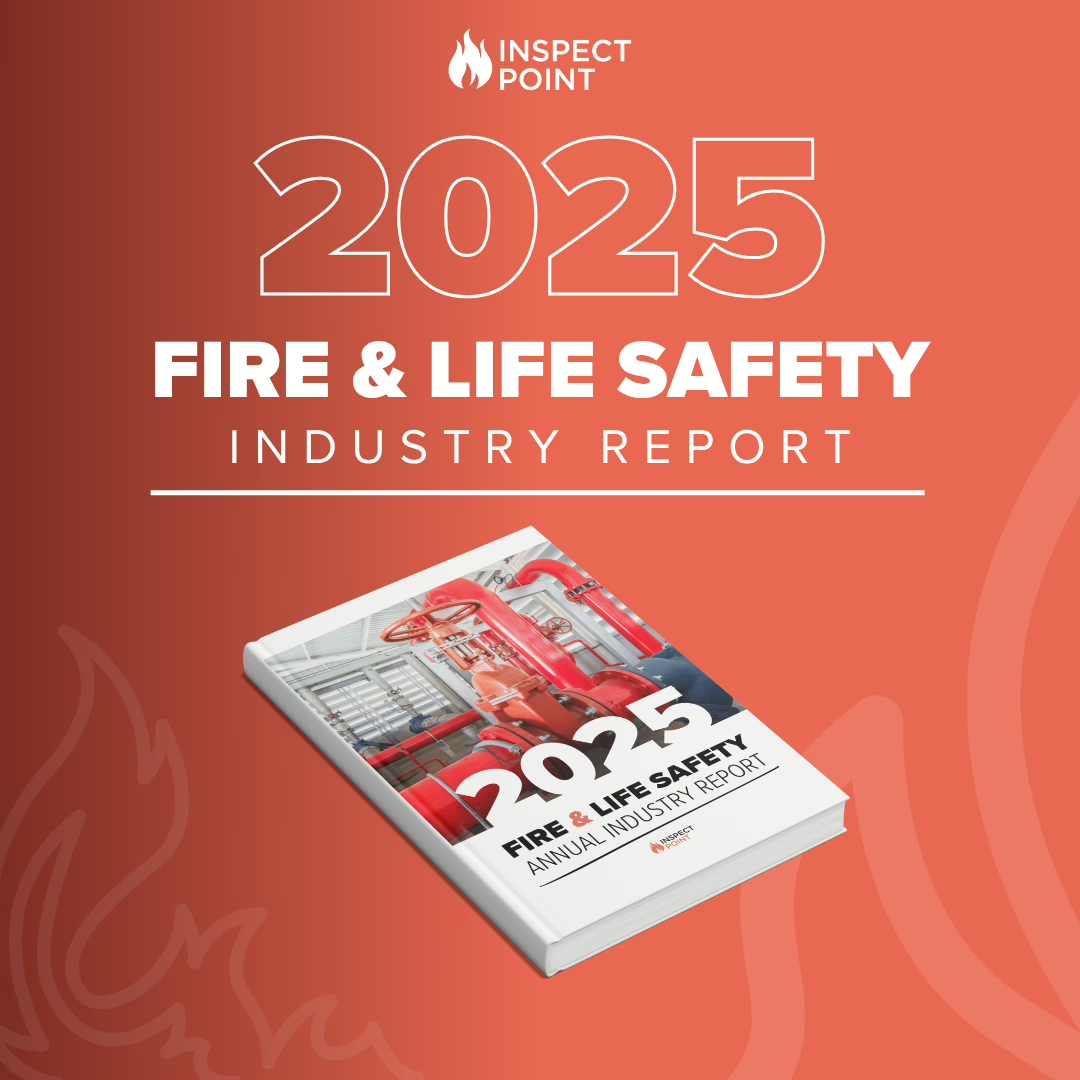
You and your techs have seen it before. A tech starts their day on a sprinkler system in one AHJ, and then a backflow inspection in another bordering area (with additional steps needed for the building’s insurance provider). Each job may require a different NFPA code, code year, and specialized questions.
Juggling these jurisdictional or customer requirements can be time-consuming and stressful, especially when running a business on pen and paper or software that isn’t geared to the industry.
However, a solution like Inspect Point, dedicated to the fire protection industry, alleviates many of these challenges.
Features like automated code year management, embedded NFPA-compliant reports, and customizable question sets take the burden of compliance off your shoulders. Without having to juggle paper forms, manual spreadsheets, or incomplete forms, your team can focus on building relationships with customers, growing your business, and keeping your community safe.
How Inspect Point Helps Businesses Stay Compliant
On day one, Inspect Point users have immediate access to an extensive library of report templates – including NFPA and ULC standards, along with Joint Commission, DNV, and Title 19 California forms.
Our in-house industry experts monitor updates from NFPA, ULC, and other organizations, making sure that our questions, frequencies, and templates adhere to the latest requirements.
Any time you schedule and dispatch an inspection, you can rest assured that your tech out in the field will automatically have access to a correct, compliant, and up-to-date question set for that day’s job. Plus, our intuitive inspection series feature automates the management of recurring inspections and reports, ensuring the tech answers the appropriate questions for the given frequency – weekly, monthly, quarterly or annual.
Features like automated code year management, embedded NFPA-compliant reports, and customizable question sets take the burden of compliance off your shoulders.
Ultimately, this means we do the heavy lifting of ensuring compliance, so you don’t have to worry about analyzing changes from one code year to the next, manually updating report templates, or making sure your tech has the correct form.
Managing Jurisdictional Requirements with Inspect Point
As many fire protection companies know, the code year that different jurisdictions adopt can vary significantly from one to the next. When you’re working in multiple areas, it can be tedious to manage a range of code year requirements.
Fortunately, Inspect Point’s multi-code year support for NFPA 25 makes it easy to manage code years across your service area. Within Inspect Point, you can set a ‘default’ code year for your NFPA 25 reports, selecting from 2011, 2014, 2017, or 2020.
Since we know that some buildings you service may be in different jurisdictions, we make it simple to override the default code year for specific buildings. This means that any inspection dispatched at this building and its associated inspection report will automatically reflect its specific code year.
What Else Is Included in Inspect Point’s NFPA 25 Inspection Features?
Inspect Point’s NFPA 25 management goes beyond up-to-date, pre-loaded inspection questions and compliant reports. Other helpful features include:
- Customizable questions and flexible configuration, so you can ensure the final report output meets your business and customer needs
- The ability to quickly and easily add systems, assets, and valves from the office or the field, so you can get set up fast and hit the ground running
- Built-in fire pump curves with comparison to the manufacturer, prior year curves, as well as degradation
- The inclusion of NFPA code references on questions and deficiencies
- Business-boosting deficiency management tools that make it quick and easy to quote, schedule, dispatch and complete service work.
Want to learn more about how Inspect Point’s inspection-to-collection features can help your sprinkler inspection business?
Book a Demo

